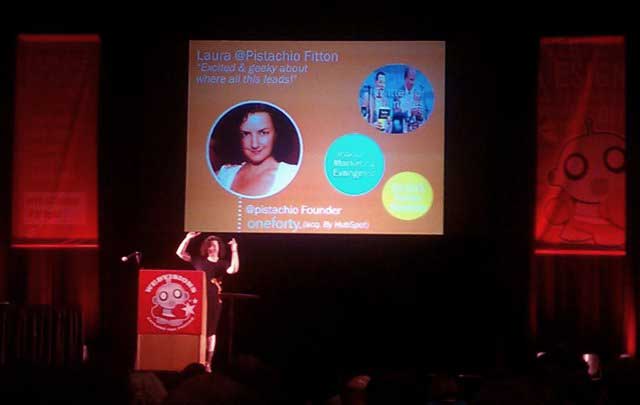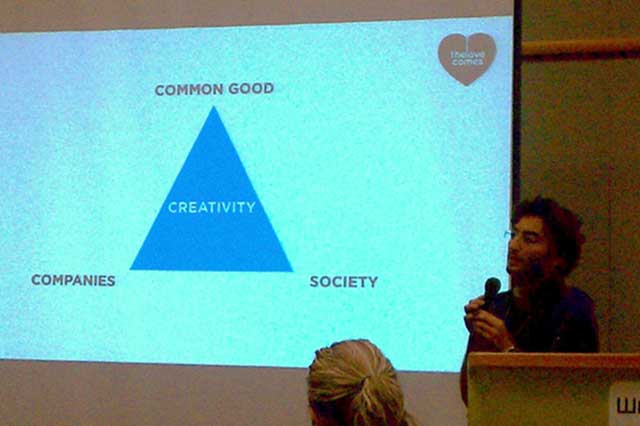I've done my modest share of presenting and attending conference events. This year's WebVisions Portland, which several of my colleagues attended, and where a colleague also spoke, inspired me to write about conference presenting.
I felt, as did many attendees, the pressure of holding back the ocean for two or three days while away from the office. But like others I met, I was seeking insight about our industry. I heard many inspiring things, but I also heard quite a few confusing messages.
My attempt at Zen is to provide feedback to presenters everywhere, so here are some lists about what is excellent and what is less than excellent (based on examples from my experience at WebVisions).
Excellent
Explore your passion
You've made a name for yourself by doing something that is relevant to most conference attendees. A presentation with a brief history and meaningful highlights from your experience, especially when delivered from your own personal passion, is pretty excellent.
Even if attendees don't learn anything new, or even if they consider your subject matter somewhat bizarre, they end up inspired.
Specific props to keynote speakers Nathan Shedroff and Chris Noessel, who discussed "Sex and SciFi" and managed to do it in a practical yet engaging way by relating each fictional example to a real-life counterpart
Laura Fitton succeeded with the topic "Whither Twitter?"—a title that was only a modest representation of her actual speech and zeal.

Laura Fitton, "Excited & geeky about where all this leads!" started as a stay-at-home mom with no social media background and ended up a Twitter expert with a published book (Twitter for Dummies) and Twitter Web marketplace Oneforty (purchased by HubSpot).
Talk about new ideas
Even if your concept is untried, a conference is a great venue to explore possibilities and theories based on your. Reach for the stars, roll out that list of things you've always wanted to set in motion, and collect audience feedback or encourage participation to get ideas flowing.
In addition to presenting "at-market" examples, my company's chief technology officer, Joe Davis, chose to share ways geolocation can be improved with currently available technologies. And he did it using game ideas involving vampires and werewolves.
Give real-life examples
Real-life examples are great. We all love to know what others in our industry are up to (and how it's working for them). Two presenters from Barcelona, Alessandro Madeddu and Miquel Guri, were filled with energy about creating change and using imaginative ideas to provide big results. For example, their social media soccer campaign encouraged fans to bet on a game with food instead of with money. The result was fun for the fans, over one ton of donated food, and a huge amount of publicity for the soccer team.
Scott Frangos gave real-life examples about using Google+ and WordPress, but I especially enjoyed his example of how an entire business idea, Chef Hangouts, sprung from using the Google+ Hangouts to give interactive cooking classes.
I also loved Brian Doll's example of creating a persona, including a voice for that persona, when imagining how your product sounds (for example, helpful, sassy, intellectual) while writing copy or designing interactions. He used his company GitHub's Octocat character as an example.

"The Love Comes," says Alessandro Madeddu and Miquel Guri, in that when companies use creativity and technology they can provide benefits for themselves, society, and the common good.
Less Than Excellent
It's not real
The worst faux pas that I and my fellow conference attendees noted occurred when a presentation ended up being nothing at all like the title or program description, or both.. Looking back at the conference program while writing this article, I became even more convinced, because I have absolutely no memory of at least two of the presentations I attended.
Often it's not that the presentation was bad. It just wasn't relevant enough. And though mentioning things like aliens or unicorns in your title can be provocative, you should be able to deliver on your title's promise in a meaningful way, preferably by providing a real-life interpretation of your abstract idea.
Confronted with a long list of choices, conference attendees deserve to know up front whether the presentation will provide the information they're looking for.
It's over-promoted
I came into one presentation expecting to hear about a business topic and ended up sitting through a pitch for the presenter's product. Even though the product was fairly well known, and I found the session interesting, I felt disillusioned. (Please see "It's not real" above.)
It's OK, maybe even fabulous, to mention your, or someone else's, product, book, services, etc.—but please be up front about it or don't make it the focus of the presentation.
It doesn’t make sense
Talking heads can provide us a life lesson in the art of conference presenting that can go really wrong when the presentations is too abstract, confusing, or move too quickly—basically when they stop making sense.
If you're presenting a lot of complex information, time your delivery and use friends or colleagues to assist you when you can. Prioritize the importance of the various pieces of your presentation. Take time to fully explore each slide and allow for audience questions or discussion, and hold some slides back (the less important ones) if you run out of time.
On the other extreme, if you run out of prep time or think it would be a good idea to devote a chunk of the presentation to watching a random video you think is funny or cute, but offers little insight or disconnects from your presentation topic, please reconsider.
Give us something simple, meaningful, coherent, and on topic that most of us can apply to our work or lives.
* * *
If you're thinking about presenting somewhere, you can make a more effective pitch and presentation by considering the following questions:
- Who is my audience?
- What do I hope they'll learn in the time we've spent together?
- What would I like to gain from our engagement?
- Am I providing knowledge, inspiration, or both?
- What is my overarching message?
- Does everything in my slides or multimedia reinforce my message?
Attendees can also make their own experience better by connecting with their favorite presenters after the presentation, in person or virtually, to share additional thoughts or questions, to get copies of the slides, or to provide thoughtful feedback. I also believe in the power of praise. Everyone likes to hear they've made an impact.
Your final "moment of Zen": when we present at or attend a conference, we've all made an effort to come together and learn from or be inspired by each other. So let's make it productive.
What are your best or worst examples from attending or presenting at an event? I'd love to hear your thoughts.
(Image courtesy of Bigstock: Lamp-head businessman)



